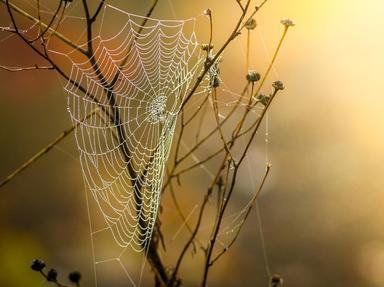Quiz Answer Key and Fun Facts
1. The arachnid depicted is a common housemate of humans and can exacerbate problems such as allergies and asthma. What is it?
2. The mites pictured are sometimes known as 'itch mites' and are parasitic, burrowing under the skin of mammals (including humans) to lay their eggs. What is the proper name for this unpleasant species?
3. Members of the Ixodes genus of arachnids are responsible for transmitting the bacteria that cause Lyme disease to humans. What type of arachnids are classified under Ixodes?
4. Arachnids known as whip spiders or tailless whip scorpions - that are actually neither spiders nor scorpions - belong to which order whose name derives from the Greek for "blunt rump"?
5. The creature shown in the picture clue might look like a scorpion, but is in fact a member of the Thelyphonida order of arachnids known as whip scorpions. It is also known by what name derived from one of its defensive tactics?
6. Solifugae is an order of arachnids whose members tend to have particularly large jaws (chelicerae) and are mainly found in desert and semi-desert regions. Which of these common names is often applied to the creatures?
7. Leiurus quinquestriatus is one of the most deadly species of scorpion in the world and is found throughout the Middle East and northern Africa. Which of these options is one of the common names often given to the species?
8. The picture clue shows a female scorpion carrying her offspring around on her back, but by what name are baby scorpions properly known?
9. The Ricinoididae family of arachnids can be identified by the characteristic cover that they can lower over their head and mouth. They are more closely related to ticks and mites than spiders and scorpions, but are generally known by what common name?
10. Opiliones are arachnids with particularly long legs that can be differentiated from spiders by the fact that their bodies appear to consist of a broad single segment (as shown by the picture clue). By what name are they commonly known across the English speaking world?
Source: Author
Fifiona81
This quiz was reviewed by FunTrivia editor
Tizzabelle before going online.
Any errors found in FunTrivia content are routinely corrected through our feedback system.

